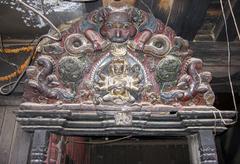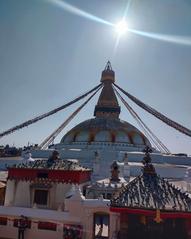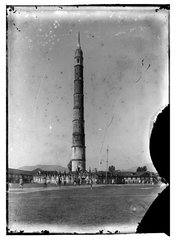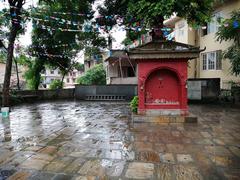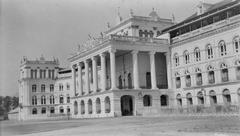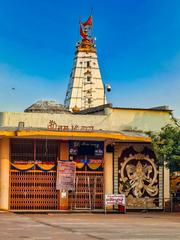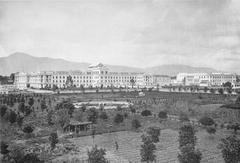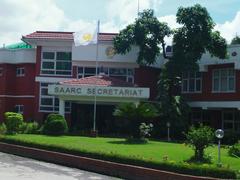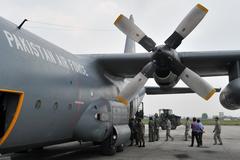
Ranipokhari Kathmandu Nepal: Visiting Hours, Tickets, and Historical Sites Guide
Date: 04/07/2025
Introduction: The Legacy of Ranipokhari in Kathmandu
Situated at the vibrant core of Kathmandu, Ranipokhari—translating to “Queen’s Pond”—is a symbol of royal devotion, spiritual unity, and Nepali architectural grandeur. Built in 1670 CE by King Pratap Malla as a memorial for his late son and a gesture of comfort for his grieving queen, Ranipokhari has evolved into a cherished cultural and religious landmark reflecting Kathmandu’s resilience and rich heritage (Agent Akash; Himalayan Circuit).
Ranipokhari’s central Balgopaleshwor Temple—dedicated to Lord Shiva in his child form—sits atop a small island, accessible by a stone causeway. The pond boasts a unique blend of architectural styles, transitioning from the original Granthakut (Shikhara) form to Gumbaz (dome) modifications during the Rana era, and has now been meticulously restored to its traditional design after the 2015 earthquake (The Himalayan Times; Nepal Traveller). Its waters, sourced from sacred rivers across Nepal and India, symbolize interfaith unity, attracting devotees from both Hindu and Buddhist traditions (Himalayan Circuit).
Open daily to locals and tourists, Ranipokhari offers a tranquil oasis amid Kathmandu’s urban bustle and a vibrant hub during festivals like Tihar’s Bhai Tika, when the temple is illuminated and opened to the public. Its proximity to major city landmarks such as Durbar Square, Thamel, and Ratna Park ensures easy access for travelers seeking to immerse themselves in the city’s heritage (Nepal Database).
This guide provides an in-depth exploration of Ranipokhari’s origins, architectural and spiritual significance, restoration, visitor information, nearby attractions, cultural etiquette, and practical travel tips—equipping you to make the most of your visit to one of Kathmandu’s most iconic heritage sites.
Table of Contents
- Introduction
- Historical Background and Construction
- Architectural and Spiritual Significance
- Restoration and Conservation
- Cultural and Religious Importance
- Visiting Hours, Tickets, and Accessibility
- Travel Tips and Nearby Attractions
- Special Events and Guided Tours
- Photography and Visuals
- Frequently Asked Questions (FAQ)
- Conclusion
- References
Historical Background and Construction
Ranipokhari was commissioned in 1670 AD by King Pratap Malla of the Malla dynasty as a tribute to his queen following the tragic loss of their son (Agent Akash). The pond, originally called “Nhu Pukhu” (“New Pond”), features a rectangular layout (approximately 163m x 126m) and was filled with water brought from sacred sites across Nepal and India, symbolizing spiritual purity and unity (Himalayan Circuit).
Architectural and Spiritual Significance
At the pond’s heart stands the Balgopaleshwor Temple, accessible via a stone causeway from the southern embankment. Originally constructed in the Granthakut (Shikhara) style, the temple was later reconstructed in the Gumbaz (dome) style after the 1934 earthquake and ultimately restored to its historical design post-2015 (The Himalayan Times). The temple, open only during the annual Bhai Tika festival, is a sacred site for both Hindus and Buddhists.
Around the pond’s four corners stand smaller shrines, and the embankments are fortified with brick and stone, bordered by an ornate iron railing. Statues of King Pratap Malla and his family, along with elephants, adorn the southern embankment, highlighting the royal legacy (Himalayan Circuit).
Restoration and Conservation
Ranipokhari has faced destruction from earthquakes, notably in 1934 and 2015. The latest restoration, led by the National Reconstruction Authority with input from heritage experts and the local community, focused on authenticity—using traditional materials and techniques to preserve the pond’s original architecture and spirit (The Himalayan Times). Water management improvements included the integration of rainwater harvesting and sustainable sourcing from the Bagmati River.
Cultural and Religious Importance
Ranipokhari is an epicenter for religious and cultural activities, especially during the Tihar festival’s Bhai Tika, when the central temple opens for sibling rituals. The pond’s water—collected from sacred Hindu and Buddhist sites—embodies Kathmandu’s religious pluralism and the unity of its diverse communities (Himalayan Circuit; Kathmandu Post).
Visiting Hours, Tickets, and Accessibility
- Visiting Hours: Typically open daily from 6:00 AM to 6:00 PM. (Check for updates during festivals and restoration work.)
- Tickets: Entry to the pond area is generally free, though nominal fees (NPR 10–25) may apply for non-Nepali visitors (Nepal Database).
- Temple Access: The central temple opens only during Bhai Tika (Tihar).
- Accessibility: The site is pedestrian-friendly and mostly accessible, though the stone causeway and embankments may pose challenges for those with limited mobility.
Travel Tips and Nearby Attractions
How to Get There:
Central location near Ratna Park and a short walk from Thamel and Durbar Marg. Accessible via taxi, rickshaw, or on foot; public buses serve Ratna Park.
Nearby Sites:
- Kathmandu Durbar Square (UNESCO World Heritage Site)
- Thamel (tourist district)
- Garden of Dreams
- Patan Durbar Square
- Swayambhunath Stupa
Travel Tips:
- Visit early or late in the day for serenity and best light.
- Dress modestly; remove shoes when entering temples.
- Respect religious practices and avoid disruptive behavior.
- Carry water and protect valuables, especially during festivals.
Special Events and Guided Tours
The highlight is the Bhai Tika festival during Tihar, when the temple opens for sibling rituals and the pond is decorated with lamps and flowers (Nepal Traveller). Guided heritage tours by local operators often include Ranipokhari as part of Kathmandu’s historical circuit.
Photography and Visuals
Photography is permitted around the pond. Avoid photographing rituals or devotees without permission. Sunrise, sunset, and festival illuminations provide stunning photographic opportunities.
Suggested media:
- Images of Ranipokhari at dusk or during Tihar (Alt: “Ranipokhari pond illuminated during Tihar festival”)
- Central temple and causeway (Alt: “Balgopaleshwor Temple on Ranipokhari island”)
- Statues and embankments (Alt: “Statue of King Pratap Malla at Ranipokhari”)
Interactive maps and virtual tours are available on several travel websites.
Frequently Asked Questions (FAQ)
Q: What are Ranipokhari’s opening hours?
A: Generally 6:00 AM – 6:00 PM. Confirm during festivals or restoration periods.
Q: Is there an entry fee?
A: Usually free; nominal fees may apply for foreigners.
Q: Can I enter the central temple?
A: Only during the Bhai Tika festival at Tihar.
Q: Is Ranipokhari wheelchair accessible?
A: The pond’s perimeter is accessible; the causeway and central island have uneven surfaces.
Q: When is the best time to visit?
A: Spring (March–May) and autumn (September–November) for pleasant weather; Tihar for cultural festivities.
Conclusion
Ranipokhari endures as a profound testament to Kathmandu’s history, culture, and spiritual resilience. From its origins as an expression of royal grief to its role as a communal and religious focal point, the pond and its temple offer a unique window into Nepal’s architectural and cultural legacy. Meticulous restoration efforts and ongoing community engagement ensure that Ranipokhari continues to inspire visitors and locals alike.
For the latest information, guided tours, and heritage resources, download the Audiala app and connect with local tourism channels. Plan your visit to Ranipokhari to experience firsthand the enduring spirit of Kathmandu.
References
- Ranipokhari: Visiting Hours, Tickets, and History of Kathmandu’s Iconic Pond, 2024, Agent Akash (Agent Akash)
- Restoration of Historical Ranipokhari Almost Completed, 2024, The Himalayan Times (The Himalayan Times)
- Sacred Ponds Inside Kathmandu Valley, 2024, Himalayan Circuit (Himalayan Circuit)
- Rani Pokhari: Kathmandu’s Living Landmark and Its Rich Heritage, 2024, What the Nepal (What the Nepal)
- Rani Pokhari - A Pond of Love and Legacy, 2024, Nepal Traveller (Nepal Traveller)
- Historical Monuments in Nepal: Entry Fees and Opening Hours, 2024, Nepal Database (Nepal Database)
- Kathmandu City Travel Guide, 2024, The Longest Way Home (The Longest Way Home)
- Why Rani Pokhari Matters, 2016, Kathmandu Post (Kathmandu Post)





